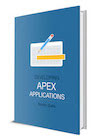Oracle Database 12c introduced Oracle Real Application Security (RAS), the next generation Oracle Virtual Private Database (VPD). In APEX 5.0 RAS is declaratively build-in. Follow the below steps to enable it:
Login to the INTERNAL workspace and go to Manage Instance > Security:
In the Real Application Security section set Allow Real Application Security to Yes.
Next login to the Workspace your Application is build in and go to your Authentication Scheme.
You'll see a new section in there called Real Application Security.
The dropdown has following possibilities:
- Disabled: Real Application Security does not get used in the application.
- Internal Users: APEX creates a RAS session and assumes that all users are internal and passes false via the is_external parameter to dbms_xs_sessions.assign_user.
- External Users: RAS session created and true gets passed via the is_external parameter to dbms_xs_sessions.assign_user.
The last two options enable RAS Mode and make the Dynamic Roles and Namespaces shuttle available. (from the help in APEX) Make sure that the users get privileges to access the application's schema objects. For External Users, you can for example grant database privileges to a RAS Dynamic Application Role and configure it in this authentication scheme as a Dynamic Role. You can also enable roles via a call to apex_authorization.enable_dynamic_groups, e.g. in a Post-Authentication procedure.
You can read more about Oracle Real Application Security and view an entire example how to set up RAS at the database side. I'm still learning about all the RAS features myself too, but thought to already share the above. I plan to include a chapter in my e-book about RAS and APEX 5.0 with a real-case example, as I see a big benefit for using it in a highly regulatory, secure and audited environment.















